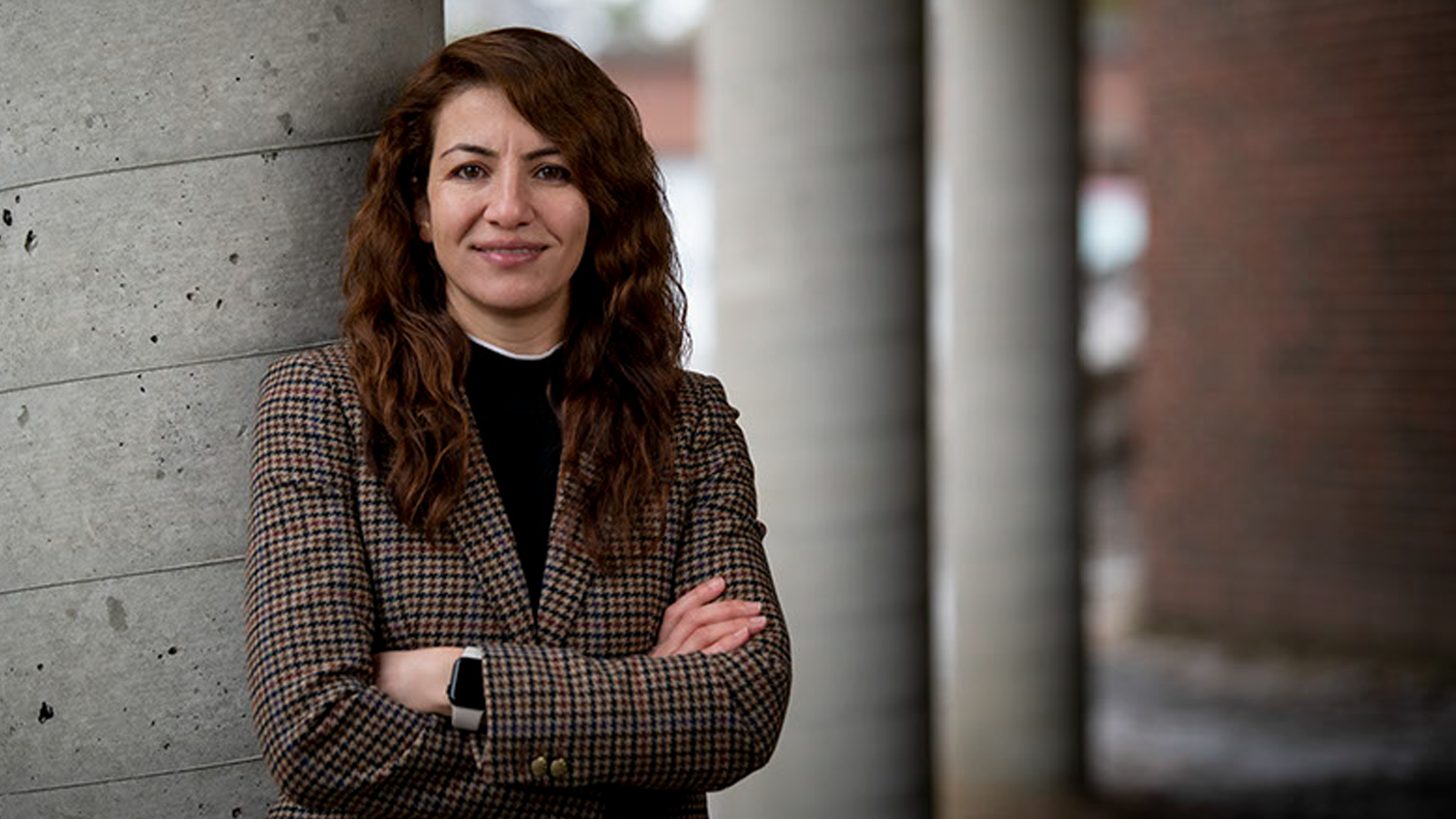
Research Computing Faculty Spotlight: Salimeh Yasaei Sekeh
by Stefania Irene Marthakis
Salimeh Yasaei Sekeh, Assistant Professor of Computing and Information Science at the University of Maine (UMaine), works in the field of Artificial Intelligence (AI) on projects ranging from robotics to biomedical engineering. Sekeh also serves on the Advanced Research Computing, Security and Information Management (ARCSIM) Advisory Board as a faculty member, where she provides guidance on AI-related computing resources such as High Productivity Computing Systems (HPCS).
The Sekeh Lab focuses on two areas of research: (1) Addressing the foundation of AI models by studying the obstacles within the current models and working to improve them (e.g., efficiency, reliability, performance precision, robustness). “How can we advance this AI model foundationally, so they can be reliable to address real world problems?” And (2) The application of AI, how AI can be applied to real world problems from fields such as forestry, medical science, agriculture, and marine science by using existing AI models as well as advancing the AI models from practical perspectives.
To create something that is automated and intelligent, you need to use a set of tools or systematic algorithms, which is Machine Learning (ML). Sekeh explained, “Machine Learning uses knowledge from different sciences such as computer sciences, mathematics, and statistics as well as optimization, computing, and analyses. You put these all together to build up the set of tools. AI models then try to make a decision intelligently using those tools. Machine Learning is an assistant to AI; AI cannot function without Machine Learning.”
The field of AI is expanding rapidly and the application of AI is found within a diverse set of disciplines within college departments. Currently at UMaine, biomedical engineering, agriculture, marine science, and forestry projects are investigating and exploring opportunities in AI that can help them achieve their project’s vision. For example, INSPIRES (NSF EPSCoR RII Track-2 project) applies AI and ML techniques to hyperspectral forestry data to predict and label specific forestry regions of New England.
The biggest AI challenges universities and institutions (that are not tied to large companies), such as UMaine, face is computing resources. “HPCS is a big challenge,” Sekeh stated. “You need a lot of computing resources, especially from an efficiency perspective, because you need to train your AI model on a tremendous amount of data.”
Beyond that there are other major challenges with AI models such as reasoning and trustworthiness, especially when it comes to critical sciences, for example, medical surgeries. There are also challenges in terms of social media and advertisement, and the effects on the behavior and education of younger generations. “The AI field is moving forward very rapidly,” Sekeh said, “and we are trying to catch up with these obstacles.”
Currently, the Sekeh Lab has a PC with one Graphics Processing Unit (GPU) for each graduate student, and the lab recently purchased one tower with three GPUs that the whole lab can use. Sometimes, the Sekeh Lab uses other available resources on and off campus.
“The major need for students in my lab is computer resources because it is tied to time. Time these days is the most precious thing we have,” Sekeh stated. “There is a huge difference when a student runs a code and it takes one week or it takes one day. This task is followed by evaluation and modification on the model, study the results and outcome, improve the model, and make a decision on the next steps based on the steps before. Just imagine, this sequence of actions on a project is getting delay after delay. When we have the right resources, we can act quickly and accomplish each step of the project efficiently.”
The other challenging aspect of computer resources and time is because the field of AI is growing so fast. If researchers are waiting for months for the results on a specific topic, there are a lot of papers out in scientific journals on that specific topic already. “You are basically behind on the advancement of certain topics within the AI community, which is a major concern, especially for Ph.D. students and PIs when they are actively doing research,” Sekeh explained.
Currently, Barrows Hall at UMaine is setting up a GPU Cluster (multiple computers or nodes connected with a high-speed network) with the opportunity for faculty to use in fall 2023. “The moment we get the chance to use those machines, we are on it,” Sekeh stated. “I think this is a great idea, and I strongly support this. We not only need one GPU Cluster, but I believe we need more computing resources like this to stay competitive.”
